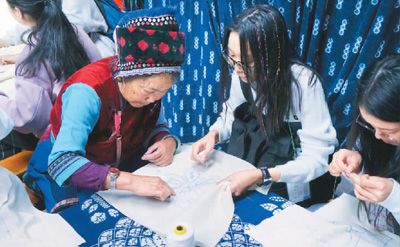Hong Kong teenagers study and travel to Dali to feel the charm of Bai culture and art


Recommended reading
-
Interview with Li Yi, Deputy Secretary of the Education Working Committee of the Beijing Municipal Party Committee -
Editor's note: In recent years, the Beijing education system has focused on the actual acquisition of students, comprehensively deepened the comprehensive reform of education, and worked hard to make high-quality educational resources benefit more students, which has explored important experience for the national education reform and development. Recently, Li Yi, deputy secretary of the Education Working Committee of the Beijing Municipal Party Committee, and spokesman of the Beijing Municipal Education Commission, visited the People's Daily Online to deeply interpret and share Beijing's exploration experience in the field of basic education such as reducing students' schoolwork burden, the reform of the new college entrance examination, and how to promote the construction of a high-quality education system
-
What is the impact of the new college entrance examination on college enrollment? The director of the recruiting department said -
Editor's note: The 2021 National College Entrance Examination will officially start on June 7. This year, Hebei, Liaoning, Jiangsu, Fujian, Hubei, Hunan, Guangdong, Chongqing and other provinces in the third batch of comprehensive reform of the college entrance examination will implement the "3+1+2" model
Top Ranking
-
one College entrance examiners cheat! How did the mobile phone enter the examination room? Education -
two The "Four Histories" Ideological and Political Course has aroused great popularity among college teachers and students all over the country -
three The national college entrance examination in many places has ended, and the time schedule for checking scores in many provinces has been successively -
four Strengthen the protection of minors: no lack of guardianship and care -
five An Expert Evaluation of the 2021 College Entrance Examination -
six 2021 National College Entrance Examination Geography Volume: Focus on Key Competencies -
seven Why is the biology national test of 2021 college entrance examination conducted like this? Life -
eight Education evaluation should return to the standard of "educating people" -
nine Don't indulge in the beautiful "slow employment" -
ten Silent Square Dance Can't Just Benefit College Entrance Examination
-
comment -
follow


























